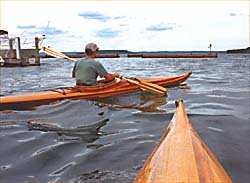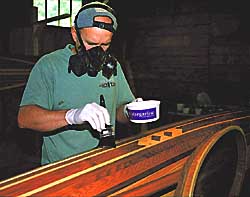 |
Photo by Garret Leiva
Larry Bordine paddles out from Bowers Harbor. |
While paddling a fiberglass canoe in Canada, Bordine wrapped the boat around some rocks. When he returned home, he began patching the canoe and found himself surprised by the quality of his craftsmanship. Inspired by his handiwork, Bordine began designing a canoe for Canadian white water. Then he came up with a better idea: why not build a boat he could use in his own backyard - Grand Traverse Bay. 

